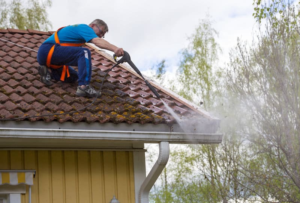Car Service ensures your vehicle is safe to drive. This includes ensuring the tyres are inflated correctly and that all of the lights and signals work correctly.
Any unusual noises or vibrations are a clear indication that a full service is required. Leaving these problems unchecked will cost more in the long run.

- Saves Money
Car services may seem like a luxury or unnecessary expense, but they’re actually an investment. Regular service allows trained technicians to catch and address small problems before they escalate into expensive repairs down the line. In the long run, the cost of a tune-up can save you thousands of dirhams in repair bills.
In addition, consistent maintenance can extend the lifespan of your vehicle and reduce the need for frequent replacements. A well-maintained vehicle will also consume less fuel, saving you money at the pump.
The biggest reason to maintain your vehicle is safety. There are thousands of preventable accidents every year caused by poorly maintained vehicles. Regular checkups ensure that all parts and components are in good working order, reducing the risk of an accident.
If you ignore minor issues such as a rattling sound or dashboard light, they can quickly escalate into major problems that will require expensive repairs or even the replacement of an entire vehicle. If you’re not willing to pay the price for these fixes, it’s better to invest in regular car service than wait until something goes wrong.
Another way that car services can save you money is by improving your fuel efficiency. Well-maintained cars utilize gasoline more effectively, resulting in improved fuel economy. Conversely, vehicles that are not regularly serviced can experience a decrease in gas mileage and require more gasoline to operate.
Finally, maintaining your vehicle will help you avoid environmental damage. A well-maintained vehicle will emit fewer pollutants into the atmosphere, which can improve air quality and decrease the negative impact on global climate change. In addition, if you have a good record of vehicle maintenance, you’ll be more likely to get a higher resale or trade-in value when it comes time to sell your car.
Overall, car service is an essential part of owning a vehicle. It’s important to schedule your factory-scheduled maintenance with reputable mechanics that offer fair and competitive prices. Be sure to do your research and read reviews before settling on an auto shop. You can also use comparison shopping tools to find the best deals on car maintenance in your area.
- Prevents Damage
When you skip regular car service, you risk exposing your vehicle to serious damages that may prove costly in the long run. For instance, if your car breaks down during an emergency or in an unsafe location due to a mechanical failure, you might find yourself paying for expensive repairs that could have been prevented with consistent car service.
On the other hand, a timely inspection by a qualified mechanic can detect issues that are just starting to manifest, such as difficulty in starting or a decrease in performance. These problems can be easily addressed and resolved, saving you money in the long run and preventing further damage to your car.
Aside from the typical oil changes and tune-ups, car services include a thorough inspection of all parts of your vehicle. Skilled technicians meticulously examine every element of your vehicle, including the brake system and suspension, to identify any potential issues that could be overlooked. For example, a sudden smell or the presence of fluid stains can signal an impending problem. A sweet smell might indicate a coolant leak, while a burning odor might point to an engine overheating issue.
Ignoring these signs can lead to extensive damage that might require costly replacements or even complete engine overhauls. For instance, a loose or burnt out spark plug can cause overheating and a subsequent blown head gasket, which will require the replacement of a number of parts. In contrast, the lubricants in your engine are replaced at the right intervals to prevent excessive wear and tear that would otherwise trigger such an expensive repair.
Aside from reducing the likelihood of costly repairs, consistent maintenance also improves your driving experience. For example, a well-maintained brake system can help you avoid accidents on the road by providing prompt response and effective stopping power. Similarly, tire treads that are in good condition provide stable traction on the road and contribute to safe driving conditions. Consistent car service weaves a safety net around your driving experience, allowing you to tackle traffic confidently and arrive at your destination feeling safe and secure.
- Increases the Resale Value
Performing regular car servicing is a great way to keep your vehicle in top condition. Not only does it help you save money by catching minor issues before they become major problems, but it also helps to increase your vehicle’s resale value. This is because potential buyers will know that the car was well-maintained and cared for, which can make them more willing to pay a higher price for it.
This is especially true for cars with a history of frequent, routine maintenance. By following the preventative maintenance schedule set by your car’s manufacturer or your mechanic, you can help ensure that all of the critical systems in your vehicle are functioning properly. This can help to reduce the likelihood of unexpected breakdowns and other costly repairs, which can be a big selling point for potential buyers.
Additionally, maintaining your vehicle’s appearance with regular cleaning and waxing services can help to preserve the paint job and exterior trim. This can be an important selling point for older vehicles that may have seen better days or for people who are planning on keeping their car for a long time. Additionally, having a documented service history can make it easier to sell your car or trade it in at the dealership.
Car service increases resale value by boosting the confidence of drivers on the road. A well-maintained car will respond predictably to the driver’s every input, making even long drives feel like a smooth dance of control rather than an anxiety-inducing test of endurance.
As more and more people are choosing to buy second-hand cars, it’s becoming increasingly important for owners to take the necessary steps to ensure their vehicle has a high resale value. By following the preventative maintenance schedule set out by your car’s manufacturer or mechanic and keeping detailed records of all of the work performed, you can help to ensure that your vehicle will retain its value for as long as you own it. This is especially important for older or more expensive vehicles, which can see a significant drop in value if they are not well-maintained.
- Saves Time
The most obvious reason to get your car serviced on time is that it can save you money. Not only does it prevent major repairs down the road, but it also reduces fuel consumption and can even help your car maintain its resale value. It’s not hard to understand how much of a hassle it can be when you are stuck on the side of the road with a broken down vehicle, and the last thing that you want is to wait for a part to arrive or to pay expensive repair fees.
A well-maintained car is a reliable one, and avoiding regular car servicing is the same as putting off going to the doctor until you are feeling really sick. You might be able to get away with it for a while, but eventually, you’ll need to deal with the damage that has been caused and you’ll spend more than if you had just taken your vehicle in for servicing at regular intervals.
In addition to saving you money, car servicing can help you save the environment too. A clean engine is more efficient, so it burns fuel more effectively and produces fewer harmful pollutants. Regular oil changes, air filter replacements, and tune-ups help your car run like a lean, green machine.
As you can see, there are many benefits of ensuring your car is regularly serviced. It improves safety, ensures your vehicle runs smoothly and efficiently, extends the lifespan of the vehicle, saves you money on fuel, protects your resale value, and minimizes environmental impact. It’s a non-negotiable aspect of responsible car ownership.
Car maintenance is more than just a chore – it’s an investment in your mental wellbeing. When your vehicle runs smoothly and predictably, it becomes an extension of you on the road, transforming long drives into confidence-building explorations rather than anxiety-inducing tests of endurance. It’s all about a partnership, and keeping up with routine maintenance is the best way to strengthen your bond with the machine that takes you where you need to go.
